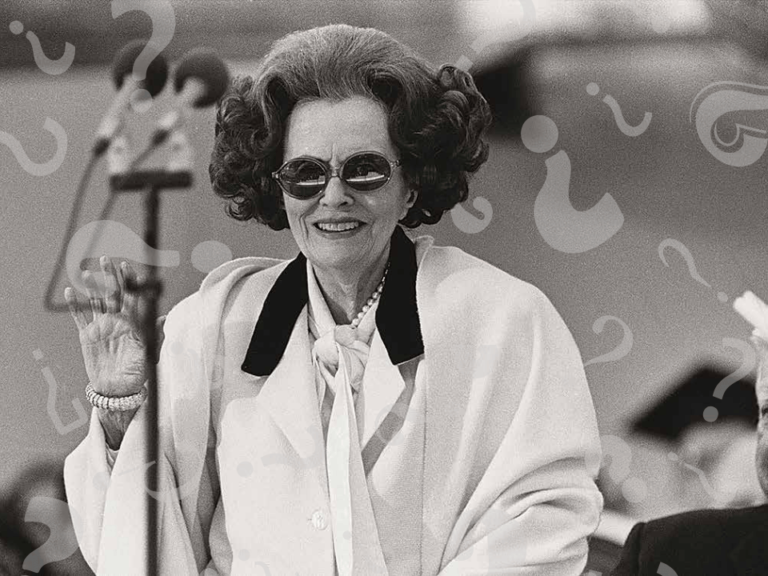On Oct. 21, 1974, John Cleland lay in a hospital bed at Indiana University Hospital.
At 23, he had just graduated from Purdue University and just married.
He was also three weeks into a fourth-line chemotherapy regimen for advanced metastatic testicular cancer. The disease had spread to his lungs.
Lawrence Einhorn, Cleland’s doctor, told him that this was the end of the road.
“Like so many patients then and now with testicular cancer, you see these round, white, kind-of-like snowballs scattered throughout the right lung and the left lung,” Einhorn, IU Distinguished Professor of Medicine and the Livestrong Foundation Professor of Oncology at IU Melvin and Bren Simon Cancer Center, said to The Cancer Letter. “Certainly, without chemotherapy, John’s chances of surviving more than a year was basically zero.”
A conversation with Einhorn appears here.
Cleland had tried three types of chemotherapy, but the disease invariably returned.
“Back then, 40 years ago, boy, medical oncology was in its dark ages,” Cleland said to The Cancer Letter. “They used some chemotherapies that today, people scratch their heads and say, ‘What?’ Man, I had some antique chemotherapy.”
Einhorn had shown Cleland a chest film three weeks earlier, on Sept. 27, 1974. “He told me that he didn’t think I was going to make it,” Cleland said. “That’s when he offered me cisplatin.” The new platinum-based chemotherapy drug was to be combined with bleomycin and vinblastine.
On Oct. 21, Cleland was admitted with high fever—104.5—and was given another chest X-ray.
“In the afternoon, Dr. Einhorn and [his nurse] Becky Furnas Bond exited the elevator,” Cleland recalled. “When they came off the elevator, I knew just from their body language that somebody had good news.”
Einhorn didn’t expect much from Cleland’s new X-ray.
“To be honest with you, most of the time, when an experimental drug is combined with other drugs, even today, in 2014, if you’re using a treatment that is fourth-line therapy and you look at a chest X-ray three weeks later to see how pulmonary metastases are doing, it’s going to show further progression,” Einhorn said.
This image was different.
The snowballs were nowhere to be seen. Einhorn and Bond checked several times to make sure it was the right film.
“Dr. Einhorn came to my room and said, ‘John, the chest X-ray is clear. I think you’re gonna make it!’” Cleland said.
“Larry Einhorn saved my life. It can’t get any bigger than that. So it really is my 40th anniversary just a couple of days ago, as far as I’m concerned.
“It’s like I’m having a birthday.”
Einhorn went on to conduct a phase III trial that, in conjunction with other surgical advancements and toxicity mitigation strategies, would lead to a 95 percent cure rate for testicular cancer patients. There are now more than 300,000 testicular cancer survivors.
Cleland’s initial plan upon graduation was to work on a farm; his degree was in animal science.
Instead, he taught biology at Zionsville High School for 30 years until retiring in 2011. He and his wife had three children—a son and a pair of boy-girl twins—and is now a grandfather.
The 40th Anniversary
The IU Simon Cancer Center has raised $1 million in honor of the 40th anniversary of Einhorn’s discovery.
“When Dr. Einhorn began his work four decades ago, there was no term ‘cancer survivor,’” Patrick Loehrer, director of the IU Simon Cancer Center, said in a statement. “Now, thanks to his research and leadership, 95 percent of the most common cancer in young men is curable. Today, the IU Simon Cancer Center is uniquely positioned to develop a program of significant magnitude for all cancer survivors.”
The new survivorship research program will use gene sequencing technology.
Of the $1 million raised—contributions from patients and friends of Einhorn—$700,000 will be used to launch the program.
According to IU, this includes a leadership gift of more than $500,000 from A. Farhad Moshiri of Monaco. Moshiri had previously created the Lawrence H. Einhorn Chair with a $2 million gift.
The Einhorn Chair will be held by the survivorship program director.
The children of Sidney and Lois Eskenazi pledged $300,000 to honor Einhorn and celebrate their parents’ 60th wedding anniversary. The gift from Sandy, Dori (Meyers), and David Eskenazi and their spouses establishes the Sidney and Lois Eskenazi Fellowship in Hematology/Oncology at the IU School of Medicine.
“The significance is that what Dr. Einhorn started using resulted in a cure and not merely an extension of survival,” said Peter Boyle, president of the International Prevention Research Institute, professor of global public health at Strathclyde University, and lead author of the State of Oncology 2013 report. “Oncologists now know how to cure testicular cancer, the commonest form of cancer in young men.”
Einhorn’s true gift is his ability to connect and help others, said Otis Brawley, chief medical officer for the American Cancer Society, and professor of hematology, oncology, medicine and epidemiology at Emory University.
“Otis has very few heroes, and Dr. Einhorn is one of them,” Brawley said to The Cancer Letter. “The guy is without ego. He’s not self-effacing, and he’s not self-promoting.
“One of the things that Larry Einhorn is well known for, you can be a doc anywhere in the world, and you can find the phone in the ASCO directory, and say, ‘Can I discuss a patient with you?’
“And Larry’s answer is always, ‘Yes.’”
Cover Photo: Cleland and Einhorn, left to right, at the 40th anniversary celebration hosted by Indiana University.













